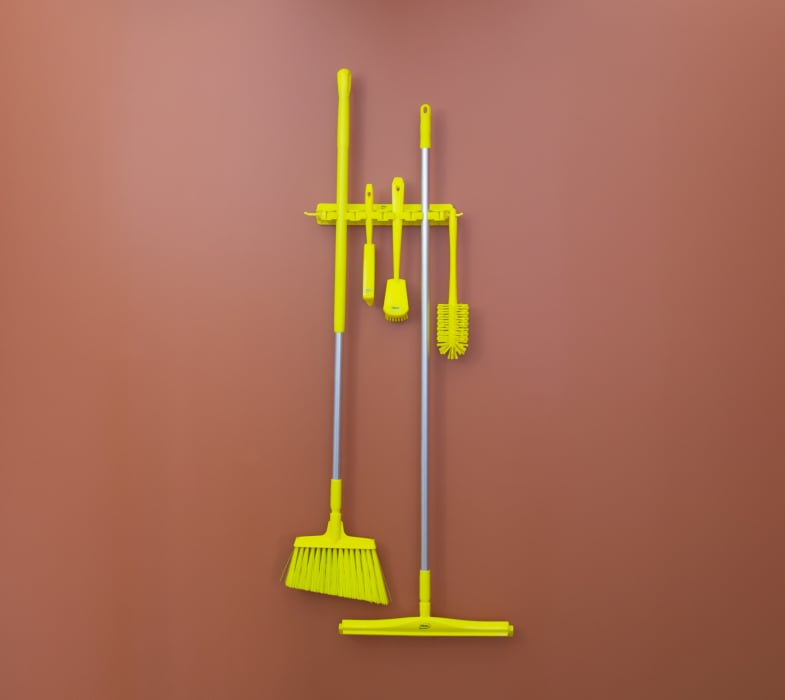Best Practices for Hygienic Tool Storage
Written by Adam Serfas

Essential to the success of any facility's color-coding plan is determining how those color-coding tools will be stored and it's vital that you roll out any new color-coding plan with this in place from the get-go. To help you decide what kind of storage method works best for your facility and how to best implement a hygienic tool storage system, review these best practices.
1. Choose between the two best methods for storage.
Wall Racks and Shadowboards are the best way to store your color-coded tools. Choosing between these two storage methods is the first decision you'll need to make.
Depending on your work environment and tool needs, you may want to choose one or the other but each is considered to be a hygienic choice that compliments facility color-coding plans. Shadowboards tend to be used in more critical areas where knowing whether a tool is there or not is more important, and wall racks tend to serve a more general purpose tool storage option.
2. Store tools in the area where they should be used.
Storing tools in the vicinity in which they are intended to be used is important for making sure it is easy for employees to access and store the tools with ease. The more difficult it becomes to source and store tools, the higher risk you run that employees will not comply with the color-coding plan.
3. Color coordinate your tool wall racks or shadowboards with your color-coded tools.
Be sure to extend your color-coding plan to your storage space. Make it clear to employees where tools should be stored by matching the color of your rack or board to your tools.
4. Place tools in an area that allows adequate space.
Tools should be stored in an area that allows enough space for them to be suspended above the floor. You'll also want to ensure that your wall racks or shadowboards are hung with spacers placed behind the rack or board to prevent water and bacteria from hiding behind. Ensuring your tools do not come in contact with floors and walls will help maintain their sanitary condition and can limit cross-contamination and wear in the long run.
5. Get in the habit of only storing tools once they have been cleaned.
Your wall racks or shadowboards can only remain hygienic if the tools stored there are properly cleaned before they are hung up. Be sure to communicate this expectation to your employees in training procedures to mitigate cross-contamination between tools and the storage racks or boards
6. Note your tool storage plan in your safety plan for the facility.
The way you store your tools is an essential component of your facility safety plan and should be clearly documented as such. This is particularly important for facilities that handle food and need to clearly note cleaning and sanitization procedures for proper compliance with food safety regulations.
7. Check in on the state of your tool storage racks regularly.
Just as you need to check in on how your tools are holding up, it's equally important to ensure that your tool storage systems are free of significant wear and are kept clean at all times. We recommend making this check a regular part of your facility's cleaning and sanitization routines to ensure it is prioritized.


